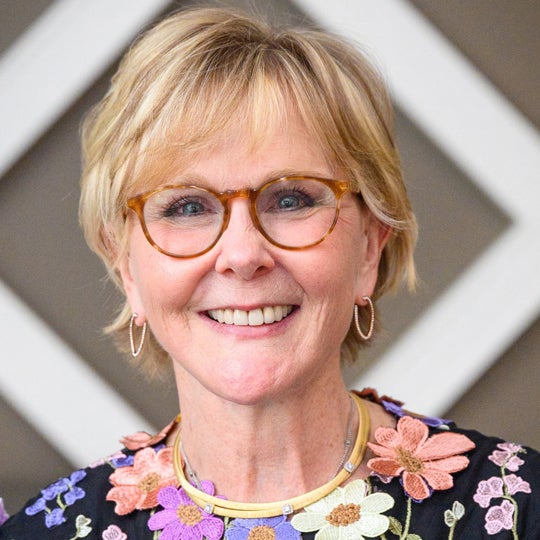Looking Ahead: 2021 Philanthropy Trends

Each year, I look forward to offering predictions for what’s next in philanthropy. While many of the trends I pointed to last year were realized, no one could have accurately predicted the events of 2020. We experienced in one year what felt like a decade’s worth of historical events. COVID-19, calls for racial justice, natural disasters and politics significantly impacted our lives, communities and the way we socialize.
Although challenging, the past year was also clarifying. 2020 was a stress test for philanthropy. It was an opportunity for donors and charities to engage their highest ideals and missions—and they did. Charitable organizations have a renewed momentum and confidence in the importance of their work. Donors remain committed to supporting causes they care about and can see their impact—this is especially true for donor-advised fund (DAF) donors. I believe we will continue to see increased donor generosity and involvement in the coming year.
Here are my predictions for 2021:
Crisis grantmaking will evolve to sustain COVID-19 driven needs.
Our communities faced extraordinary hardship in 2020. Charitable organizations, from international aid groups to local food pantries, adapted quickly. Donors reacted to the immense needs with immediate and generous grantmaking, often with unrestricted dollars. Unrestricted giving is central to trust-based philanthropy, which acknowledges that charities know their constituents and causes best. This philosophy will spread and make it easier for organizations to act and provide relief where it is most needed. In 2021, crisis grantmaking will no longer be simply reactive, short-term grantmaking to meet immediate needs. Crisis grantmaking will morph and become sustained and thoughtful in meeting long-term challenges and systemic vulnerabilities.
The fight for racial and social equity will take center stage.
As we continue to confront long-existing injustices, donors, activists and others will champion—and challenge—philanthropy’s ability to address them. I predict donors will focus on racial and social equity and will support resolutions to the issues from which crises evolved in 2020. Disparities in education, housing, hunger and health will motivate many others. Expect activists and frontline organizations to bring their perspectives to the philanthropic conversation. Transparency and accountability will be increasingly important. Businesses too will increasingly be asked to answer not only to investors, but to their employees, customers and society at large in the overlapping areas of social justice and equity. Expect the conversation and debates in philanthropy to become even more complex in 2021.
Decision-making will diversify.
Board leadership and staff diversity in the social sector will be paramount in 2021 and beyond. Boards and executives must seek out different perspectives if they wish to truly innovate. Innovation can come from all directions in the organization, so a diversity of perspectives, backgrounds and experiences across an organization is not only an ethical imperative, but a strategic advantage. For their part, donors will continue to do their research and due diligence, not only on charities’ missions and finances, but also on their organizational makeup, governance and equity.
The great transfer of wealth will proceed.
This year, I recommend that the sector continue engaging the next generation of philanthropists and informed citizens. Over the next two decades, we will see over $68 trillion transferred from Baby Boomers to their heirs. Younger donors have a strong interest in volunteerism, advocacy and peer-to-peer fundraising in addition to charitable giving. In my experience as both a CEO of NPT and a longtime grad course instructor at the University of Pennsylvania in their Nonprofit Leadership Program, I know the next generation is eager to engage in and change philanthropy and the inequities that Black and brown people face daily.
The new normal will mean new norms.
In my 2020 predictions, I noted that technology would continue to make a big impact in mobilizing philanthropic capital. Digital landscapes certainly changed our social and professional lives. Technology can be expensive, and donors should consider equipping charities with tech solutions, but as Lucy Bernholz notes in her 2021 Philanthropy and Digital Civil Society Blueprint, they should also look to help them create a sustainable “digital infrastructure” that advances their mission and helps them create “community.” In 2021, people will continue to gather over Zoom, donate through social media platforms and hold virtual galas. As social distancing remains part of our reality, video streaming platforms, well-planned online events and creative new digital solicitations will raise millions of charitable dollars. Expect the fast-paced world of Fintech to further intersect with the world of philanthropy.
Closures will continue, but donors will look local.
Small and medium-sized charities struggled the most with the effects of the COVID-19 pandemic. But there was also a reawakening among donors to the vital importance of local organizations, especially those serving the most vulnerable. Studies like the Edelman Trust Barometer show that social trust is shrinking and faith in traditional institutions is on the decline, but that local organizations still have relatively high levels of trust. However disconcerting this trend is, it may disrupt donors’ priorities. It will likely have a positive effect on local causes, small organizations and community foundations with which donors have a personal connection.
Data will inform, but not dictate, philanthropic dollars.
Analytics continue to drive everything from global commodities markets to how we shop. Philanthropy will be even more data-driven in 2021—for donors, advisors and charities themselves. Frontline organizations in health and hunger may benefit, while arts and education, which lagged in 2020, may need to reinvent their case for support. Metrics and measurements will guide some, but not all, philanthropic dollars. We will always have—and need—those donors who can respond quickly and from the heart, especially during a crisis. There is room at the table for both giving styles, and the dollars can be equally powerful.
In 2020, we experienced how fragile and uncertain our lives and institutions can be. With a new year, and with some reflection and renewed commitment, we all have the opportunity to learn, improve and evolve.

NPT does not provide legal or tax advice. This blog post is for informational purposes only and is not intended to be, and shall not be relied upon as, legal or tax advice. The applicability of information contained here may vary depending on individual circumstances.
To download a PDF of this blog post, click below:

